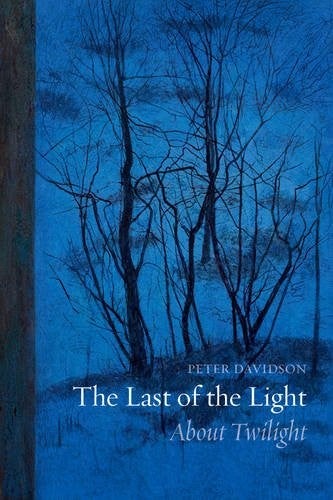The opening pages see the author taking his evening walk, “earlier every day, as the year hurries down towards the dark”.
The land is tawny and the last rolls of straw are dotted in the fields. But Davidson quickly turns his attention to the sky and the rapidly fading light, and to the marks of history all around him: “There is something secretive still about these landscapes of old rebellion”; in this case, the Jacobite rebellion.
These are “places that held out against all the revolutions, religious, industrial and glorious alike”, and their metaphor is the melancholic ebbing of the light.
These days, you’d expect an author just to google “twilight” and pile up everything he finds. Not Davidson; this is a deep and personal meditation, and while some references, particularly to painters, might be obvious – Atkinson Grimshaw, Caspar David Friedrich, Whistler – most are not.
Davidson also surprises by bringing out unfamiliar aspects of famous names: Gerard Manley Hopkins as amateur meteorologist, for example, or Goethe as “one of the most diligent scholars of the Western sky”.
There are apparently three degrees of twilight, from the lightest, civil twilight (the “blue hour”), through nautical to astronomical twilight.
The 50 Best Cookbooks
Show all 50For Davidson, the inexorable process stands for the marginalised and excluded, and the decay of empires and dynasties. After the Enlightenment, “defeated communities ... were forced to accept the metaphor of life in obscurity, so completely had the rulers of the age laid claim to the light”.
The scope ranges from Virgil who, it’s argued, in the Eclogues, invented literary twilight, to the contemporary poet Sean O’Brien. (Davidson is a richly atmospheric, historically minded and crepuscular poet himself.) There are wonderful descriptions of light in painting, including bravura passages on Tiepolo.
But before the digital era, twilight was also notoriously difficult to capture on film. Davidson relates the ingenuity of Alfred Hitchcock in Rope, when he sent out photographers at five-minute intervals to document the New York sunset. Stanley Kubrick spent a fortune and “minimised the use of electric light by using the fastest lenses available” for the candlelit Barry Lyndon.
Davidson ranges right across the disciplines in his search for allusions, citing Ruskin, Rilke, Chopin, Kant and Vanbrugh along the way. The result is revealing, poetic and (unavoidably) illuminating. As a bonus, the book is beautifully and copiously illustrated.
The Last of the Light: About Twilight, by Peter Davidson. Reaktion £20
Subscribe to Independent Premium to bookmark this article
Want to bookmark your favourite articles and stories to read or reference later? Start your Independent Premium subscription today.


Join our commenting forum
Join thought-provoking conversations, follow other Independent readers and see their replies